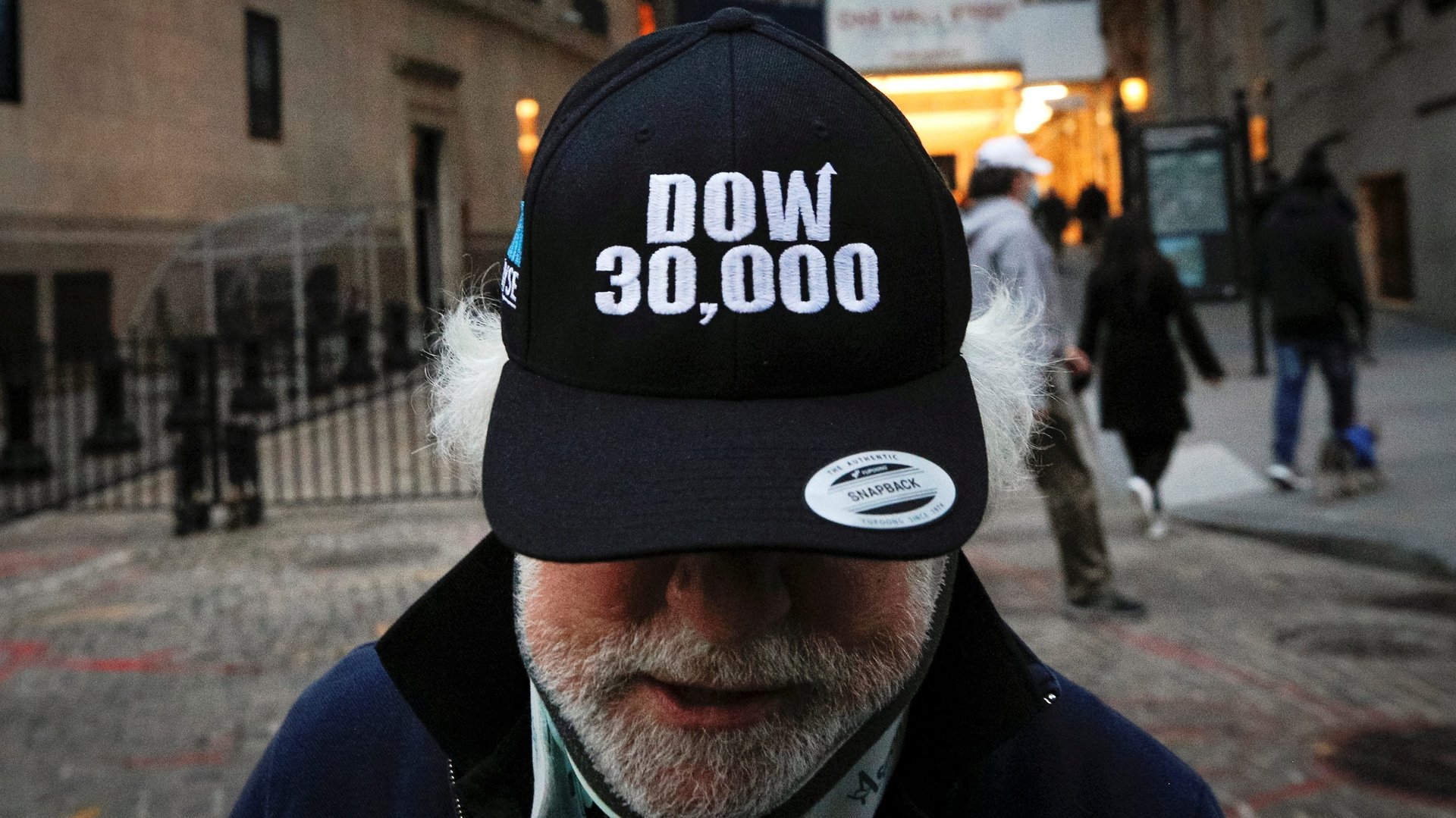Yield curve pioneer Campbell Harvey fears investors have forgotten the dot-com bubble
Are US companies more valuable than they were before the pandemic ripped a hole in the global economy? Investors are treating American stocks as though they are, but not everyone thinks that’s a good idea.


Are US companies more valuable than they were before the pandemic ripped a hole in the global economy? Investors are treating American stocks as though they are, but not everyone thinks that’s a good idea.
A range of indices set new records this week. The Nasdaq Composite, a benchmark that’s heavy on technology stocks, climbed to the highest close ever, as did the S&P 500 Index of large US companies. The Dow Jones Industrial Average soared through the 30,000 barrier for the first time. There are signs that armchair investors are helping propel the frenzy, with online stock-discussion forums abuzz and trading apps creaking under the strain. Options, a type of derivative that can be used to make lottery-like bets on the stock market, are also on fire.
“I am afraid the market is wearing rose-colored glasses right now,” said Campbell Harvey, a finance professor at Duke University who is particularly concerned about so-called growth stocks that include tech companies like Amazon and Microsoft. “Unfortunately, many young investors don’t remember what happened 20 years ago when the tech bubble burst.”
Stock prices are in territory that is seemingly priced for perfection—valuations that assume a smooth rollout of effective vaccines to contain the spread of Covid-19, and that officials in Washington will agree on spending to support the economy until those vaccines are deployed. But a lot has to go right for that to happen.
The results of AstraZeneca’s seemingly promising Covid vaccine trials haven’t yet appeared in a peer-reviewed publication, for example. While some of the US presidential election uncertainty is behind us, the pandemic is far from contained, and it remains far from certain that president-elect Joe Biden will be able to convince lawmakers to provide further stimulus spending—quickly enough, and with sufficient firepower—to protect workers and businesses.
The economy has already been hit with structural damage, as many good small- and medium-sized business have disappeared. Underscoring the carnage, more than 20 million people are receiving US government assistance—up from about 1.5 million a year ago. Like most countries, the US is racking up a debt load unseen outside of wartime, which will either have to be paid back through higher taxes or whittled down with higher inflation, says Harvey, who pioneered a way to forecast recessions by observing the yield curve, which is the gap between short-term and long-term Treasury bond yields. (You can read more here about the yield curve, which doesn’t appear to be indicating an imminent recession at the moment.)
It’s not all doom and gloom, of course. Unlike the days before the tech bubble burst in 2001, when the Federal Reserve was raising interest rates, the central bank appears intent on keeping yields extremely low, which makes refinancing cheaper. With 10-year Treasury yields hovering below 1%, nearly the lowest ever, the stock market may seem like the only viable option for many investors. Risks of a contested presidential election have dwindled and pharmaceutical companies including Pfizer and BioNTech also have a promising vaccine. And while gridlock in Washington could make stimulus less likely, it could also make higher taxes less probable as well.
Even so, there are signs that stock investors, many of them newbies, are piling into the market late, when it is already red-hot. Gains could be harder to come by, and risks are growing that the economy won’t be able to support such high valuations. “Apps like Robinhood have made it a lot easier for retail investors to play in speculative markets,” Harvey said. “Many of these investors are ‘bandwagon’ investors.”
“The stock market has priced in a V-shape economic recovery without considering any of the negatives,” he added.